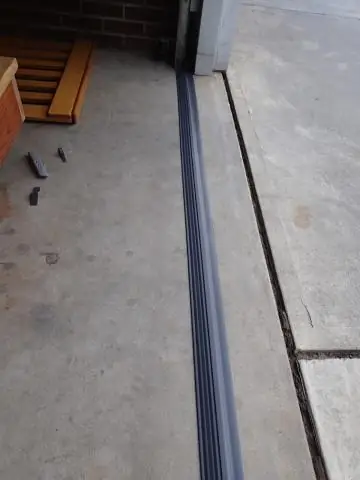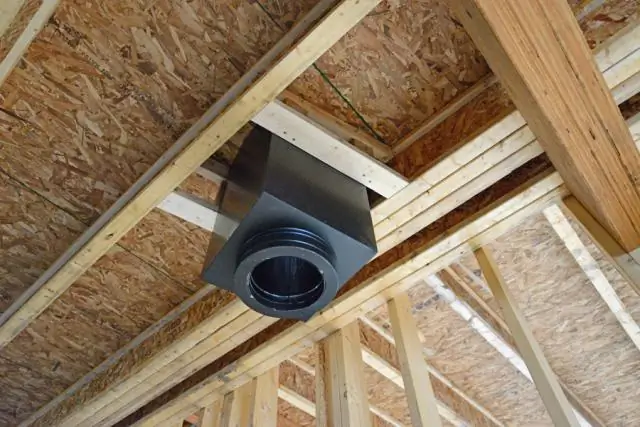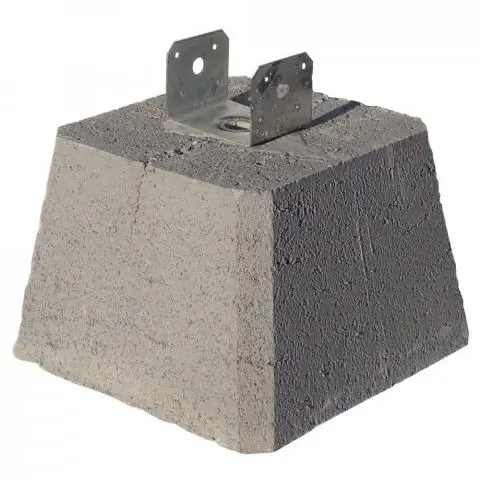
Table of contents:
- Author Bailey Albertson [email protected].
- Public 2023-12-17 12:53.
- Last modified 2025-01-23 12:41.
We insulate the bath with our own hands

External or internal insulation of the bath is necessary. This reduces fuel consumption and slows down the cooling of indoor air. If the structure is not insulated, then it will take several times longer to heat the steam room to the desired temperature.
Content
-
1 We insulate the bath with our own hands
- 1.1 Basic requirements for materials for bath insulation
- 1.2 Types of heaters for a bath
-
1.3 How to work with different types of buildings
- 1.3.1 Insulation of log cabins
- 1.3.2 Thermal insulation of buildings made of bricks or foam blocks
- 1.4 Calculation and selection of materials and tools
-
1.5 Do-it-yourself bath insulation
- 1.5.1 Ceiling insulation
- 1.5.2 Video: insulation and finishing of the ceiling from the inside
- 1.5.3 Wall insulation
- 1.5.4 Video: insulation and foil upholstery of a pair room
- 1.5.5 Thermal insulation of the floor in the bath
- 1.5.6 Video: features of the device of the concrete floor in the bath
We insulate the bath with our own hands
Before building a building, it is necessary to calculate the means and forces for thermal insulation. It is best if the process of insulation begins during construction, more precisely, from laying the foundation.
Basic requirements for materials for bath insulation
Cheap solutions (impregnation, septic tanks) will not perform the role of good thermal insulation. Of course, moisture protection is necessary in any case, but this is a separate task. It is necessary to insulate the bath premises separately, using materials specially created for this. It is customary to pay the most attention to the inside of the washroom and steam room. The selection of insulation and thermal insulation is done with the expectation of a rough building material.
When choosing a specific material, you need to rely on the following characteristics:
- resistance to steam and high temperatures;
- good fire-fighting properties;
- environmental friendliness;
- low hygroscopicity;
- the ability to maintain shape for a long period.
Types of heaters for a bath
All heaters presented on the construction markets are divided into three conditional groups:
- Organic. Natural materials ignite at high temperatures, so they cannot be insulated in the steam room. They are perfect for a dressing room or rest room.
-
Mineral. This is a suitable means for the internal insulation of any part of the bath. Time-tested, mineral slabs cannot do harm, since most of their composition is cotton wool. For a steam room, stone wool is the best option.

Thermal insulation with stone wool Stone wool meets all the requirements for heaters for a bath, therefore it is used even in a steam room
- Chemical. Everything that is made on the basis of plastic can be used in the bath, but for environmental reasons, it is necessary to make a careful external finish so that there are no harmful fumes. This mainly applies to sheets of expanded polystyrene. Foam glass is much more expensive, they are usually insulated with areas near the stove, which are lined with iron.
Of course, even 50-60 years ago, only natural materials were used, which were brought from the nearby forests. This is foam, tow or moss. Today, these are already partly elite types of insulation, they cost serious money due to the need for manual collection. Many fans of natural materials insulate their buildings with rolled jute felt or tow. Such material can be purchased at hardware stores. With regard to moss, there are conflicting opinions regarding its use. They say that moss is not an ideal material for insulation, because it provokes the growth of mold or fungi. However, the moss itself does not have these properties; most likely, the fungus is formed due to improper cutting of a wooden structure or poor ventilation.
How to work with different types of buildings
The installation procedure and the required amount of work depend on the material from which the bath is built.
Insulation of log cabins
When working with a bar or log, you need to take into account the time for shrinkage, which can be 10 cm m more. Plus, gaps form between the crowns of such buildings, and it is in them that cold air blows in. It is best to insulate a log house or assembly from a bar with jute fiber.

The jute fiber at the finish is often cut off, but you can punch these edges with a hammer and caulk
This material does not rot and has excellent thermal conductivity. Jute itself is a very fragile material, so manufacturers try to add flax fibers to it. But if friable material is already available, the classic caulking can be performed. There will be less work, and the building will probably retain more heat.
If it is decided to create a bathhouse from wood, then the insulation is laid during construction. It is better to isolate all problematic parts of the log house in the process.
The work is performed in the following sequence:
-
When building, pieces of jute are laid between logs or a bar.

Jute laying Jute fabric is available in rolls, so it is quite convenient to lay it
- After completing the construction, the insulation is compacted at the joints.
- The inner and outer parts are finally finalized with a hammer and caulk.
Thermal insulation of buildings made of bricks or foam blocks
If log cabins are insulated in a primitive way, then you will have to work hard with masonry. And there are more financial investments specifically for work with insulation. Additional thermal insulation is necessary, otherwise a well-heated room will cool down in hours. Better to work on materials than stock up on fuel the rest of the time.
A widespread and proven method is a hinged ventilated facade. The working process does not take place from the inside, but from the outside of the bath. It is necessary to fix the layers of insulation to the walls, and sheathe the top with siding or clapboard. In the gap between the layers, a space is formed, filled with air, thanks to which condensation will not form on the walls and rot and dampness will not follow.

The width of the frame for the ventilated facade is made greater than the thickness of the insulation, so an air gap forms inside, preventing the formation of condensation
For a brick building, the following trick is often practiced: a steam room is made of wood indoors. Brick absorbs heat for a very long time, so it is easier to warm a small room in a steam room naturally if you use a small frame.
A 10x10 beam and crate are enough. The process of insulating such an impromptu steam room inside a large bath is simple:
- A crate is stuffed onto the timber, then stone wool is fixed.
- Foil insulation is attached on top of the cotton wool layer.
-
As a finishing layer, lining is most often mounted.

Thermal insulation of a steam room made of wood A crate is stuffed onto the base from a bar, stone wool is inserted into it, and then a layer of foil material is attached
You can make it even easier: do not use a timber, but instead of it, immediately fix the insulation on the frame. In this case, an additional layer of waterproofing will be required.
Calculation and selection of materials and tools
We insulate all surfaces of the steam room, washroom and dressing room. And for this you will need:
- Roll paper (for ceiling and walls).
- Bar-rail (5x5, for installation of insulation on the ceiling and walls).
- Foil.
- Insulating tape.
- Self-tapping screws.
- Aluminum adhesive tape.
- Insulation, calculated on the area of walls, ceilings and floors.
Of the tools you will need:
- knife;
- screwdriver;
- level and plumb line.
Do-it-yourself bath insulation
Any stages of insulation are always performed according to the golden rule - they start from the ceiling and finish with the floors.
Ceiling insulation
Before starting work with the ceiling, you need to understand that in the steam room you need 2 times more material. After all, we are not working on a sauna, but on a Russian bath, where the steam should stay as long as possible.

The ceiling is insulated as tightly as possible, preferably before installing the oven
The technology is as follows:
- We cover the entire surface of the ceiling with overlapping roll paper.
- We fix the bars on top of the paper, insulation will already lie between them.
-
We cover it all with foil. It will become a normal, safe isolation ward. But it is necessary to mount the foil without saving. It is important that all connections are closed.

Installation of foil material A layer of foil reflects heat, so the use of such a material for a bath is necessary
-
All joints on the foil are glued with aluminum tape. Usually, the foil for insulation comes with the material.

Bonding joints The tape from the kit must be glued carefully, because it will be very difficult to reuse it
- Fasten the edges and joints with several layers of adhesive tape. We check our work for leaks. If there is not enough money for such a heater, then the foil is sometimes replaced with cardboard or thick paper without paint.
-
Next, we mount the layers of insulation on the foil between the closed bars.

Installation of insulation On the ceiling, it is better to lay the insulation in two or three layers with overlapping joints
- We close the front part of the ceiling with clapboard under a tree. This material is resistant to high temperatures and will not tar.
Video: insulation and finishing of the ceiling from the inside
Wall insulation
Next, we proceed to the walls. The essence of the thermal insulation device is similar to working with the ceiling. But here we must not forget about the ventilation entrances.
The best solution for wall insulation is a construction set made of materials that can be easily repaired or replaced.

The structure of the insulation of the walls of the bath resembles the device of a roofing pie
- Slats or timber are vertically fixed to the wall surface. The edges of the lower part must be marked with pieces of electrical tape. A narrow bar is used, and not a square bar, because the bar will not be distorted by the temperature drop. Before mounting on the wall, panels or boards must be treated with specialized impregnations, which are intended for bath rooms.
- Foil is also needed for the slats. They work with it in the same way as when insulating the ceiling. But without this material, the timber will definitely rot, and the insulation will turn out to be hacky. By using foil, you will not need to use vapor barrier films. This material is attached with a stapler directly to the timber. Then everything is pressed against the clapboard. But it is important to leave a gap or gap between the lining and the insulation. Usually two centimeters are enough.
-
Thermowood racks (lining) are mounted on the fixed rails. The finishing part is stuffed not vertically, but horizontally. According to the observations of experienced builders, heat loss is so much lower.

Wall decoration in the bath Linden lining looks great and keeps heat well, and when laid horizontally, heat loss is further reduced
Video: insulation and foil upholstery in a pair of rooms
Floor insulation in the bath
Finally, let's work on the floor. After all, a large amount of heated air usually leaves the room through it. Expanded clay is most often used as insulation for floors - it is an inexpensive and reliable insulation that prevents mold and condensation.
It is cheaper, of course, to sprinkle everything with slag, but expanded clay is more environmentally friendly and weighs less. When installing wooden floors, the material is placed between the logs. If a concrete floor is poured, then expanded clay is placed between each concrete layer.
Let's analyze the usual cycle of work on concrete floor insulation.
- First, the initial layer is poured.
- Then they wait until it solidifies completely.
-
Next, expanded clay is poured. A layer of 10 cm is enough.

Insulation of the floor with expanded clay Between the layers of the concrete floor, make a bed of expanded clay
- And again a layer of concrete is poured. It must be poured onto a reinforced grid. To do this, use welded reinforcement or steel mesh.
- At the end, a cement-sand screed is performed.
Video: features of the device of the concrete floor in the bath
In addition to the walls, floor and ceiling, they also pay attention to the insulation of doors, windows and window openings. They are treated with silicone sealants. It is customary to insulate external doors with natural materials. And it is not customary to save on them, otherwise in a few years, or even for the next season, everything will have to be redone.
Recommended:
How And How To Insulate The Garage From The Inside With Your Own Hands - Instructions With Photos And Videos

Self-insulation of the garage. Insulation selection, material calculation and process description
How To Insulate A Chimney Pipe With Your Own Hands: Choice Of Materials, Technology, Instructions With A Photo

Why insulate the chimney. What materials are used to insulate chimneys. Preparation and technology of insulation of chimneys of various shapes and designs
How To Choose And Build A Foundation For A Bath With Your Own Hands - 4x6, 3x4 And Other Sizes, Tips, Instructions, Photos And Videos

How to make a foundation for a bath with your own hands. Types and features of foundations. The choice of materials and technology, installation rules and step-by-step instructions
How And How To Insulate The Ceiling In The Bath With Your Own Hands Outside And Inside

Insulation of the ceiling in the bath outside and inside. The materials used, the methods used, their advantages and disadvantages. Step by step description of the process
How To Make A Bath Bomb With Your Own Hands: Simple Recipes With Photos And Videos, Design Options

How to make bath bombs: different recipes, including for children. Required ingredients and materials
